LG Optimus G Pro Review
LG Optimus G Pro
Hands-on: the 5.5-inch 1080p screen and 13MP camera impress, but build quality is suspect.
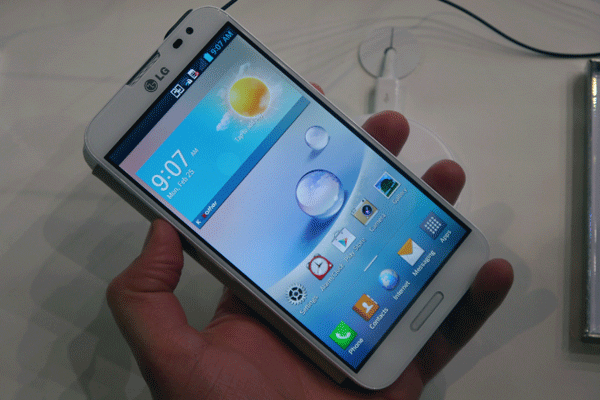
Verdict
Key Specifications
- 5.5-inch 1080p IPS screen
- 32GB internal memory, microSD slot
- Android 4.1 with custom UI
- 1.7GHz quad-core Snapdragon CPU, 2GB RAM
Introduction
It’s taken a while for manufacturers to catch on, but just about everyone in mobile seems to producing their own take on the Galaxy Note 2 these days, with a slew of giant-screened phones coming to market. LG’s take is the LG Optimus G Pro – a 5.5-inch superphone with a 1080p screen, a snappy quad-core processor and 13-megapixel camera. We managed to get our hands on one at the 2013 Mobile World Congress in Barcelona, so how does it shape up?
LG Optimus G Pro – Design and Features
The LG Optimus G Pro boasts impressive specs, but from the shallow impressions you get from gripping the thing, it doesn’t exactly feel like a super-premium phone. With a removable glossy plastic rear and lightweight feel, this is a phone that feels like it really wouldn’t appreciate being dropped. However, the slim bezel means it doesn’t feel prohibitively huge either, which is quite impressive given all the screen real estate on offer.
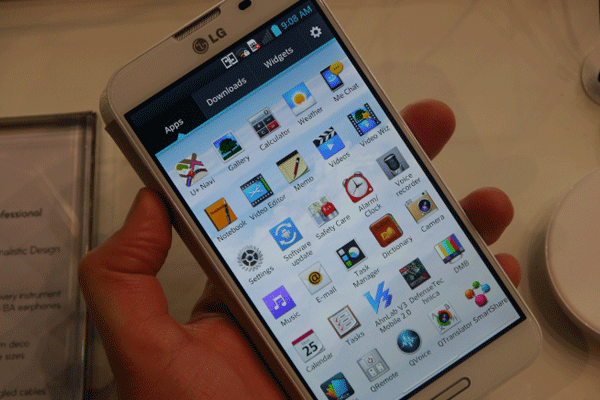
The LG Optimus G Pro packs in a bunch of geek-friendly features that tech geeks will love, though. For starters, there’s a Micro SD slot under the plastic rear, to complement the 32GB of internal memory.
Some of the other features will vary between territories. The model we saw, for example, had a telescopic aerial that will let Korean buyers receive TV. Suffice to say, we won’t be getting this feature in the UK. We’re not even sure if the phone itself will make it here at this point.
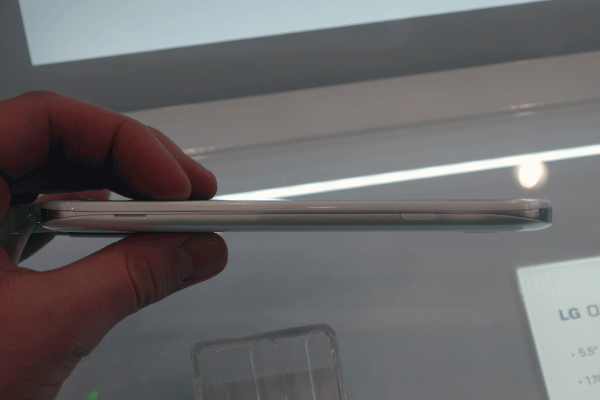
The LG Optimus G Pro will come in both 3G and 4G flavours but, again, don’t hold your breath if you’re after the 4G edition within the UK.
LG Optimus G Pro – Screen
The LG Optimus G Pro has a 5.5-inch screen. That’s the same size as the Samsung Galaxy Note 2. However, It doesn’t come with that device’s killer feature – the stylus. Instead you only get a capacitive touchscreen here.
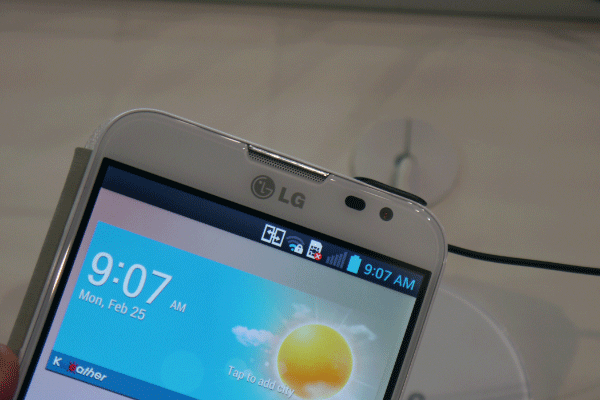
The LG’s 5.5-inch screen is probably the best bit of this mixed bag device, though. The display is a 1080p IPS model that offers fantastic sharpness and natural-looking colours. It’s undoubtedly a top-quality display, with a more relaxing and neutral tone than the Galaxy Note 2.
LG Optimus G Pro – Software and Performance
This giant Android phone runs version 4.1 Jelly Bean of the Google OS, with plenty of custom LG tweaks and features thrown in for good measure. The UI lacks the visual cohesion and sense of style you get with the HTC One and the latest version of HTC Sense, but there are some neat touches. For example, the LG takes the video multitasking of the Samsung Galaxy S3 to a whole new level. With Q Slide, you not only overlay a video on top of another activity, but also set its transparency, letting you see through the “screen” should you receive an email.

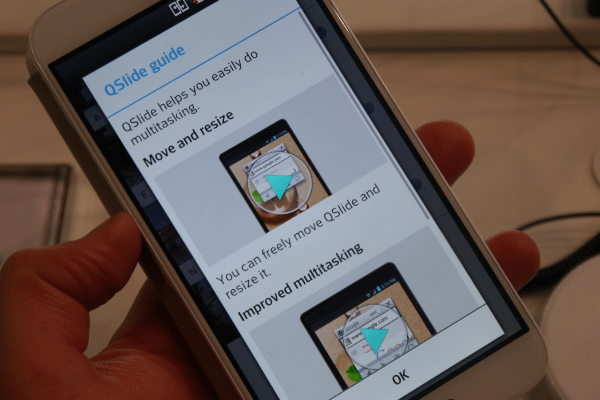
The phone also features an infra red blaster, along with a pre-installed LG controller app that’s used to control it with. An LG spokesperson said that around 90 per cent of home entertainment devices should be supported – owners of Panasonic Blu-ray players rejoice.
LG’s new superphone should be able to handle just about any Android app too, thanks to the super-fast Snapdragon 600 quad-core 1.7GHz CPU and 2GB of RAM. No phone offers more power under then hood than this at present. Performance during our hands-on time seemed great, but we’ll be sure to get out the benchmarking rack when our review unit arrives.
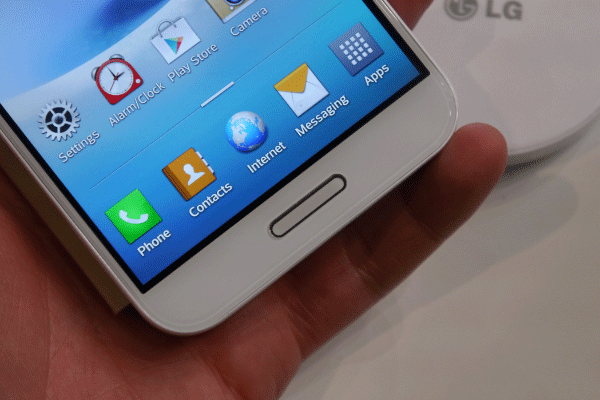
LG Optimus G Pro – Camera
Like just about every other top-end phone of 2013, the LG Optimus G Pro’s camera sports a 13-megapixel sensor. We would bet our last Rolo that it uses the same Sony sensor that all the other top competitors – including the Sony Xperia Z – do. The user-facing camera is slightly above-average, using a 2.1MP sensor. There’s also an LED flash on the rear.
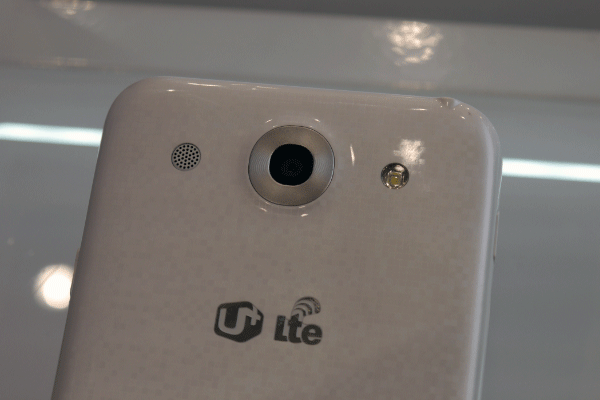
By this year’s standards, the LG Optimus G Pro’s camera isn’t anything to get too excited about, but again there are a few software doodads – some of which are best described as joyfully useless. For example, the ‘dual record’ function lets you record from the front and rear cameras at the same time. HDR video recording is in too, and that’s far less silly.
LG Optimus G Pro – Wireless charging
One extra that you don’t get as standard, but which is pretty handy, is wireless charging. LG will offer a case with a flip cover that hooks up to a charging plate. The LG Optimus Pro’s battery life should be pretty good too. Battery capacity is 3,140mAh, a shade above the 3,100mAh of the Note 2.
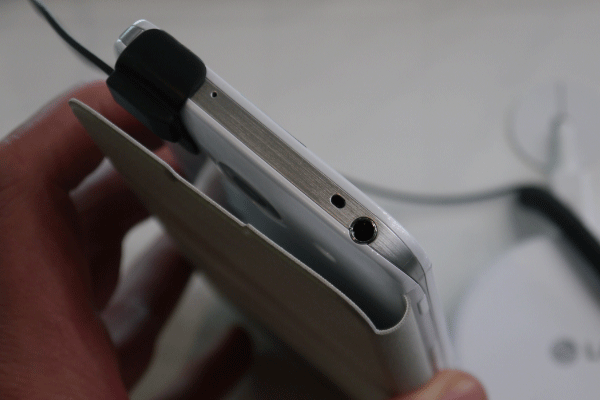
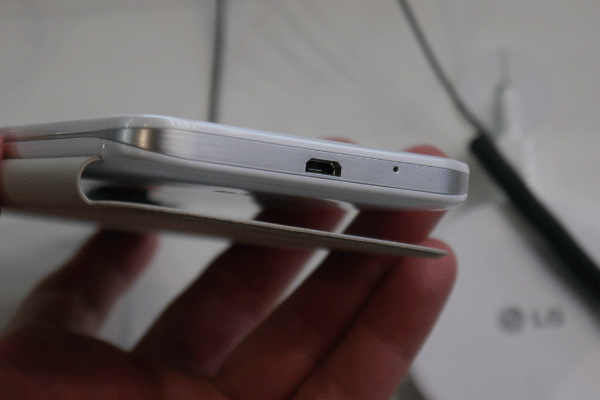
Some shots of the G Pro, with wireless charging case
LG Optimus G Pro – First Impressions
We were dazzled by the LG Optimus G Pro’s lovely screen, and intrigued by some of its oddball bits, including those we’ll never see again as they’ll most likely be lopped off before reaching the UK. However, its build left us less impressed, with the phone having quite a plasticky feel.
How we test phones
We test every mobile phone we review thoroughly. We use industry standard tests to compare features properly and we use the phone as our main device over the review period. We’ll always tell you what we find and we never, ever, accept money to review a product.


